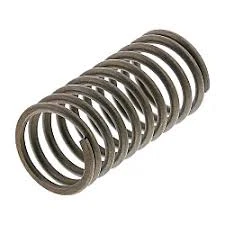
- Mobile Phone
- +8613931874955
- sales@cntcmetal.com
Innovative Solutions for Sustainable Construction Using Permanent Formwork Techniques
Permanent Formwork Revolutionizing Construction Efficiency
In the ever-evolving landscape of modern construction, the demand for innovative techniques that enhance efficiency while reducing labor and material costs is paramount. One such advancement is permanent formwork, a method that is gaining traction for its ability to streamline construction processes and provide durable structural solutions.
Permanent formwork refers to a system where the formwork used to shape concrete structures is left in place after the concrete has cured. Unlike traditional formwork, which is removed post-curing, permanent formwork integrates seamlessly into the building's structure. This technique not only simplifies construction but also offers several other benefits that enhance both the building process and the final product.
One of the most significant advantages of permanent formwork is its ability to reduce labor costs. Traditional formwork systems require a considerable amount of time and effort to set up and later dismantle. With permanent formwork, this step is eliminated because the materials remain as part of the overall structure. Consequently, construction timelines can be significantly shortened, allowing projects to be completed more quickly and efficiently.
permanent formwork

Moreover, permanent formwork contributes to improved structural integrity. The materials often used in permanent formwork, such as reinforced polystyrene or fiber-reinforced concrete, are designed to provide not only the necessary support during the curing process but also enduring strength and insulation properties. This means that buildings constructed with permanent formwork can achieve higher thermal efficiency, contributing to lower energy costs and more sustainable living environments.
Another key benefit of permanent formwork is its versatility. This method can be adapted for various construction applications, including walls, floors, and ceilings, providing a functional and aesthetic solution. Designers can leverage the unique properties of permanent formwork to create innovative shapes and configurations, enabling the realization of complex architectural visions without compromising on structural performance.
In addition to practical benefits, permanent formwork can also foster environmental sustainability. By reducing the volume of materials required for temporary formwork and minimizing waste, this approach can significantly lower the environmental footprint of construction projects. Furthermore, the thermal insulation properties of certain permanent formwork materials can improve energy efficiency in buildings, contributing to greener construction practices.
In conclusion, permanent formwork represents a significant advancement in construction technology. By merging efficiency, durability, and sustainability, it offers a holistic solution that meets the demands of modern architecture and building practices. As the industry continues to embrace innovative approaches, permanent formwork stands out as a reliable technique that not only expedites the construction process but also enhances the quality and longevity of our built environment.
share:
-
Your Source for Concrete Wall Ties and Masonry AccessoriesNewsJul.10,2025
-
Unlocking the Power of Iron Wire for Every ProjectNewsJul.10,2025
-
Explore Advanced Chain Wire and Stainless Steel Mesh FencingNewsJul.10,2025
-
Discover the Benefits of Annealed Wire ProductsNewsJul.10,2025
-
Discover China Stainless Steel Wire Mesh SolutionsNewsJul.10,2025
-
Build with Confidence Using High-Performance Masonry AccessoriesNewsJul.10,2025
-
Why Sacrificial Formwork Is Redefining Underground ConstructionNewsJun.06,2025



















